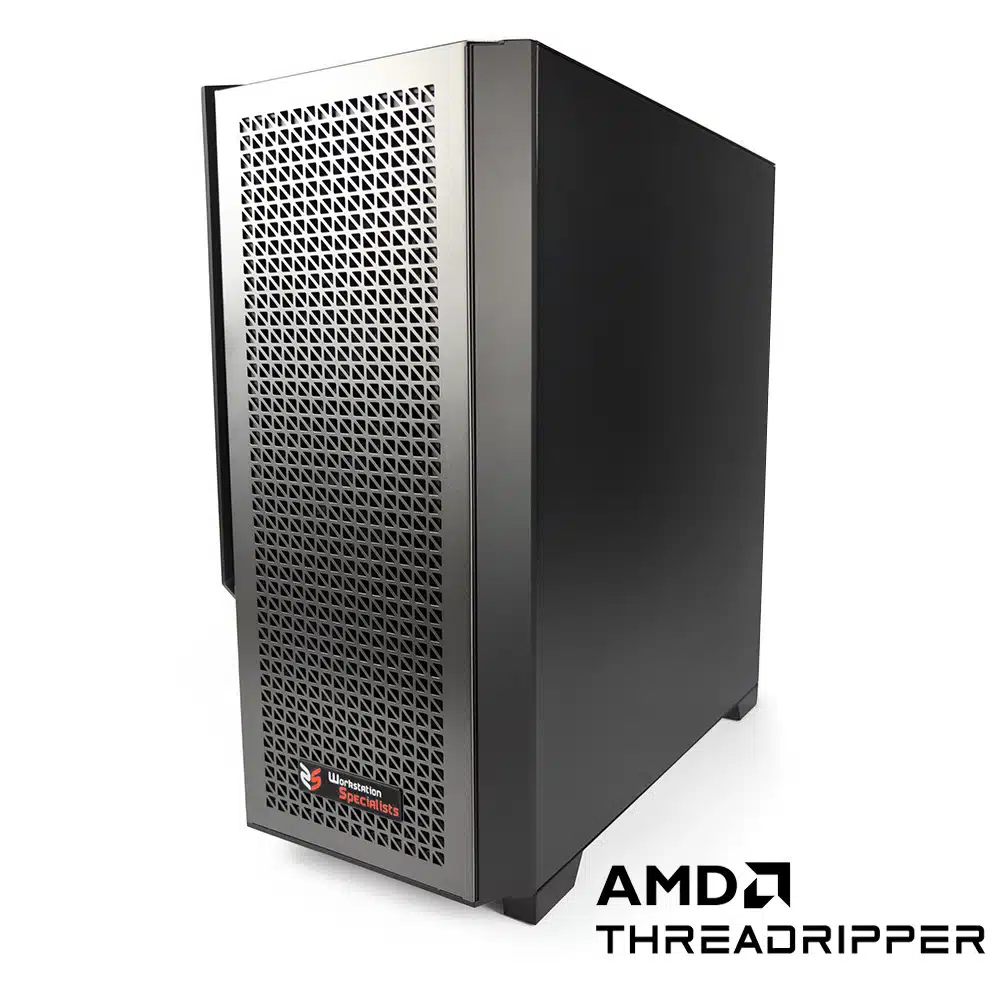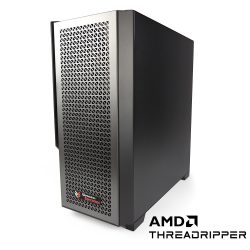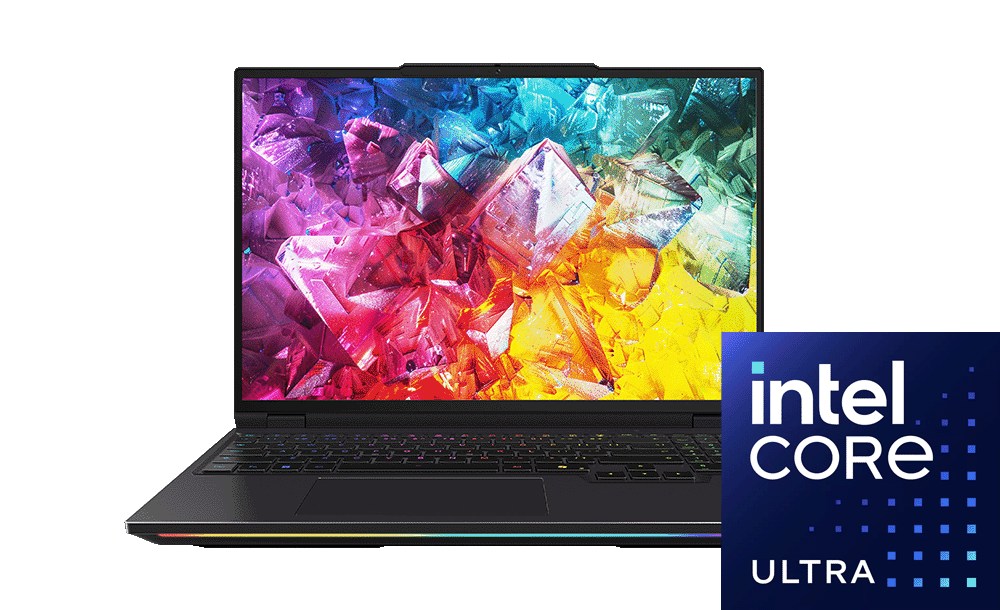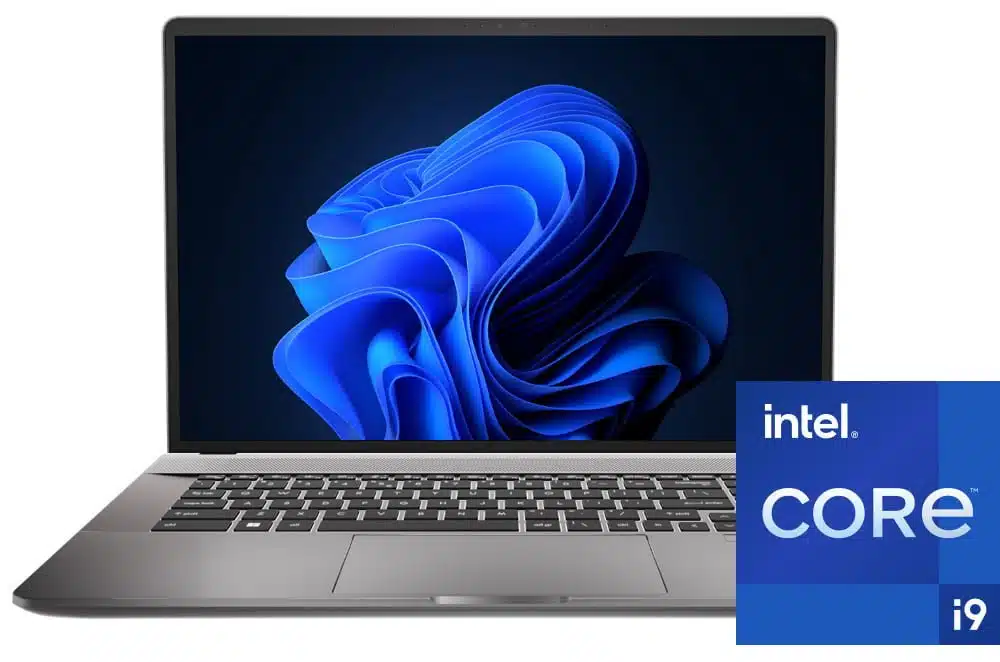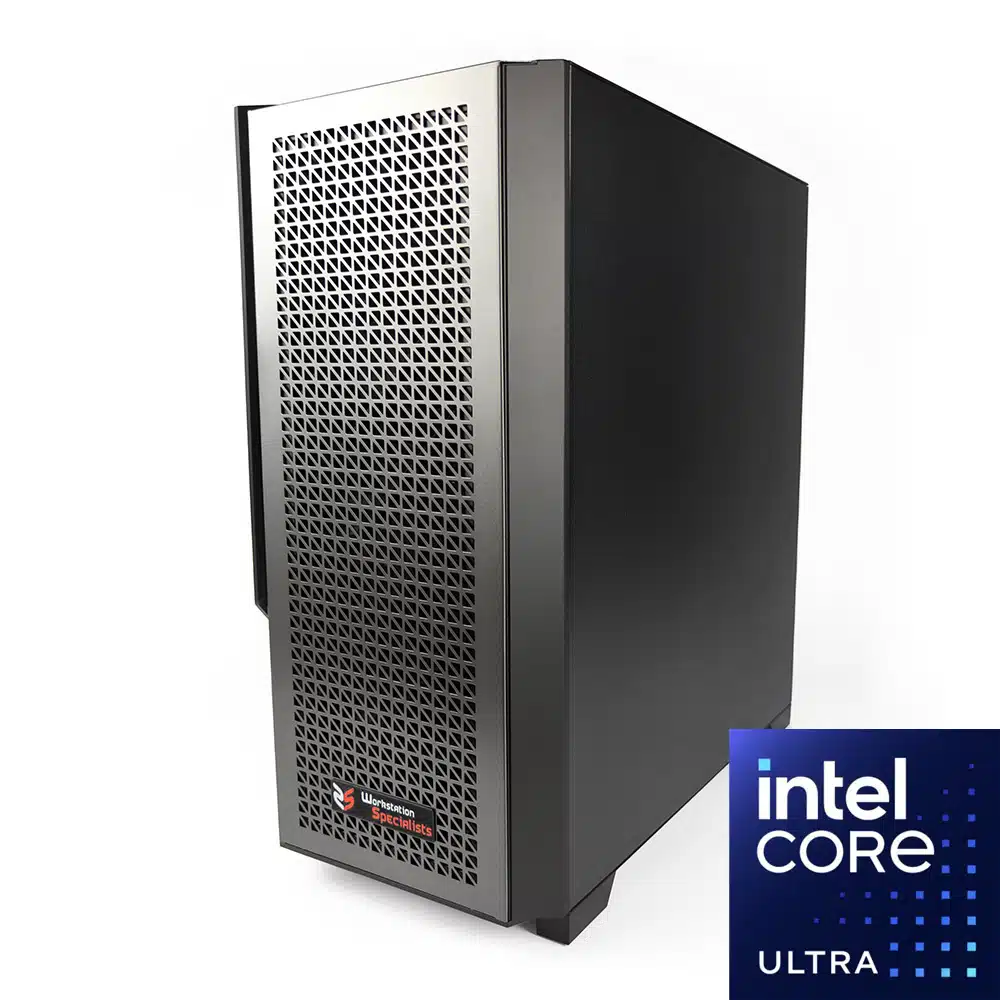The Ultimate Guide to Building the Best Computer for Blender:
Blender’s status as a versatile, open‐source 3D creation suite has made it a cornerstone for artists, animators, and designers. Whether you’re producing animated films, visual effects, detailed product visualisations, or interactive virtual reality experiences. Having the right hardware is key to unleashing your full creative potential. In today’s guide, we explore how to build a truly optimised workstation for Blender. We explore a system that isn’t just capable of running the software, but that delivers peak performance every time. If you’re in search of the best computer for Blender. Read on for a comprehensive breakdown of the essential components and configuration tips to future-proof your creative setup.
Why Invest in a Dedicated Workstation for Blender?
Although many modern desktop PCs can run Blender. A dedicated workstation is engineered to deliver the consistent, high-end performance that creative professionals demand. Here are several reasons why a custom-built system is the ideal choice:
- Enhanced Reliability: Professionally engineered workstations undergo extensive testing to ensure stability during long render sessions and complex simulations, minimising the risk of crashes or slowdowns.
- Optimised Performance: By carefully matching each component to your creative needs, you eliminate common bottlenecks. This means that every task—from real-time viewport interaction to high-resolution rendering—runs smoothly.
- Future-Proofing: With rapid advancements in both software and hardware. Investing in the right system now ensures your workstation for Blender can handle tomorrow’s innovations.
- Tailored Configurations: Whether your focus is on intricate modelling, animation, or GPU-accelerated rendering. A bespoke system lets you prioritise the components that matter most, ensuring you have the best computer for Blender tailored to your workflow.
Essential Hardware Components for Your Blender Workstation
Building a high-performance system for Blender involves selecting components that work in harmony. Below, we detail the key areas that deserve careful consideration when constructing your ideal setup.
1. Processor (CPU) – The Engine Behind Your Creativity
Blender relies heavily on the CPU for a variety of tasks, including modelling, animation, physics simulations, and even aspects of rendering. A powerful processor is the backbone of any effective workstation for Blender.
What to Look For:
- High Clock Speeds: Many of Blender’s interactive tasks—such as sculpting, editing, and viewport navigation—are single-threaded. This makes high per-core performance essential. Processors like the Intel Core Ultra series offer exceptional clock speeds, ensuring swift responsiveness during creative work.
- Multi-Core Capability: For tasks like rendering and complex simulations, having additional cores can dramatically reduce processing time. AMD’s Ryzen™ 9000 series and Threadripper 7000 series, offer 8 to 96 cores and provide excellent scalability for different workloads.
- Balanced Performance: Try to strike a balance between single-core speed for day-to-day modelling and multi-core performance for rendering tasks. This balanced approach is key to ensuring that you have the best computer for Blender in every aspect.
By carefully matching your CPU to your workflow. You create a foundation that supports every creative endeavour, from rapid iterative changes to heavy-duty rendering.
2. Graphics Card (GPU) – Your Visual Powerhouse
In Blender, the GPU is not only responsible for delivering smooth real-time performance in the viewport but also for accelerating rendering tasks using engines like Cycles. A state-of-the-art graphics card is essential to keep up with detailed scenes and high-resolution textures.
Key Considerations:
- Rendering Acceleration: Modern GPUs leverage APIs such as NVIDIA’s CUDA and OptiX to significantly speed up rendering times. The latest NVIDIA GeForce RTX 5090 and RTX 5080 models are among the top choices, delivering excellent performance for both viewport display and offline rendering.
- VRAM Requirements: The amount of onboard memory (VRAM) is critical. Insufficient VRAM can lead to performance issues when working with large scenes or high-resolution textures. For most projects, a minimum of 8GB VRAM is recommended, though high-end systems might benefit from 12GB or more.
- Professional vs Consumer Grade: While consumer-grade GPUs deliver outstanding performance, professionals with heavy rendering workloads may consider workstation-grade options like NVIDIA’s RTX Workstation Ada Generation cards. These are optimised for stability and come with enhanced VRAM configurations.
A well-chosen GPU ensures that your workstation for Blender remains responsive and efficient, whether you are animating in real-time or producing final rendered images.
3. Memory (RAM) – The Lifeblood of Multitasking
RAM is crucial for any creative workstation. It stores active applications, assets, and simulation data, allowing Blender to run smoothly even when juggling multiple tasks at once.
How Much RAM Do You Need?
- Baseline Requirement: For many users, 32GB of RAM provides a solid foundation for standard projects and moderate multitasking.
- For Advanced Workflows: When dealing with complex scenes, large texture files, or simultaneous applications, 64GB or even 128GB of RAM might be necessary. This extra headroom ensures that your system remains snappy under heavy load.
- DDR5 Memory: With DDR5 now the standard in 2025, its increased speeds and improved bandwidth are particularly beneficial for creative applications. Future-proof your best computer for Blender by investing in the latest memory technology.
Ensuring sufficient RAM improves immediate performance and extends your workstation’s lifespan as project sizes and software demands continue to grow.
4. Storage – Speed, Capacity, and Reliability
Fast, reliable storage is essential for maintaining an efficient workflow. In Blender, storage speed can affect everything from boot times and application launches to the loading and saving of large project files.
Storage Recommendations:
- Primary Drive: A high-speed PCIe NVMe SSD (1TB or more) should be dedicated to your operating system and core applications, including Blender. This drive is crucial for fast boot times and rapid software response.
- Secondary Drive: A dedicated NVMe SSD (2TB or more) for active projects and asset libraries can help streamline file access and reduce wait times during intensive operations.
- Archival Solutions: Consider additional high-capacity drives for long-term storage of completed projects and reference files. Options include larger SATA SSDs or traditional hard disk drives, which offer cost-effective solutions without impacting the speed of your primary system.
- External and Network Storage: For professionals working in collaborative environments, external drives connected via Thunderbolt 4 or USB 4.0—or even network-attached storage (NAS)—provide flexible and scalable backup options.
A robust storage setup is a vital component of your workstation for Blender, ensuring that your data is always accessible and secure.
5. Cooling and Power Supply – Sustaining Peak Performance
High-performance components generate significant heat, and effective cooling is vital to maintain system stability and longevity. Similarly, a reliable power supply is essential to support the energy demands of your entire system.
Cooling Solutions:
- Air vs Liquid Cooling: While premium air coolers can manage moderate loads, high-end systems often benefit from all-in-one (AIO) liquid cooling solutions. These systems provide superior thermal management during prolonged, intensive sessions.
- Case Airflow: Choose a case that is designed for optimal airflow. Multiple fan mounts, strategic vent placements, and dust filters all contribute to maintaining a cool operating environment.
- Regular Maintenance: Routine cleaning, dust management, and periodic thermal paste replacement are essential practices to keep your system running at peak efficiency.
Power Supply Considerations:
- Wattage and Efficiency: A power supply unit (PSU) with an 80 PLUS Gold or Platinum rating is recommended. Ensure that your PSU offers enough wattage to support your current components while providing headroom for future upgrades.
- Future Expansion: When planning your workstation for Blender, consider potential future needs such as additional GPUs or other peripheral devices. A slightly higher wattage PSU can safeguard against power issues during upgrades.
Effective cooling and a robust power supply are indispensable for maintaining the long-term stability of your best computer for Blender.
6. Peripherals – Enhancing Your Creative Environment
While the internal components are the heart of your system, the right peripherals can dramatically improve your productivity and comfort, especially during long creative sessions.
Display:
- High-Resolution Monitors: A 4K UHD monitor with excellent colour accuracy (ideally covering 99% of AdobeRGB or DCI-P3) is essential for detailed 3D work. Dual-monitor setups can further boost productivity by allowing you to manage multiple applications or reference materials simultaneously.
- Colour Calibration: Regular calibration ensures that your display produces true-to-life colours, which is particularly important for texture work and visual effects.
Input Devices:
- Precision Tools: A high-quality graphics tablet—such as a Wacom Intuos Pro—offers unmatched precision for sculpting, texturing, and fine modelling tasks.
- Ergonomic Keyboards and Mice: With long hours spent in front of your computer, ergonomic peripherals help reduce strain and maintain comfort throughout the day.
Additional Accessories:
- External Storage: Fast external SSDs connected via Thunderbolt 4 or USB 4.0 can provide extra backup options and streamline file transfers.
- Collaboration Tools: For studios and remote teams, high-quality webcams, headsets, and speakers can enhance communication and collaborative efforts.
Integrating the right peripherals completes your workstation for Blender, ensuring that every aspect of your creative environment is optimised for productivity and ease of use.
All peripherals are available from Workstation Specialists on request. Contact our sales team to have them included in your quotation.
Additional Considerations for Your Blender Workstation
Beyond the core hardware components, several additional factors can further enhance your experience with Blender:
- Multi-GPU Custom Builds: Consider systems allowing multiple GPUs if your rendering workload is exceptionally heavy. Although Blender’s viewport typically utilises one GPU, many rendering engines scale well with additional graphics cards.
- Software Optimisation: Keep your Blender software and drivers up to date to ensure compatibility and maximise performance gains from your hardware. Optimising in-app settings can also contribute to a smoother workflow.
- Future-Proofing Your Investment: With technology evolving rapidly, select components that offer some headroom. This approach meets current demands and allows your computer for Blender to handle future software updates and increasingly complex projects.
- Professional Consultation: If you’re uncertain about the ideal configuration for your specific workflow, seeking professional advice can save time and resources. Customising a workstation to match your creative style often yields the best long-term results.
Bringing It All Together
Building the best computer for Blender is more than just assembling high-performance components—it’s about creating a cohesive system that enhances every stage of your creative process. Here’s a quick recap of the key elements:
- Processor (CPU): Select a processor that offers both high single-core speeds for responsive modelling and multiple cores for faster rendering. Options from Intel’s Core Ultra and AMD’s Ryzen™ and Threadripper series provide an excellent range to suit varying needs.
- Graphics Card (GPU): Invest in a modern GPU that supports advanced rendering techniques and provides ample VRAM. Whether opting for a consumer-grade card like the NVIDIA GeForce RTX 5090 or a professional variant, the right graphics solution is essential.
- Memory (RAM): Ensure you have at least 32GB of RAM for standard projects, with 64GB or more for larger, more complex workloads. Upgrading to DDR5 can offer a noticeable performance boost.
- Storage: Utilise fast NVMe SSDs for your operating system and active projects, supplemented by additional drives for archival storage. A well-planned storage strategy keeps your data accessible and your workflow uninterrupted.
- Cooling and Power Supply: Maintain a stable system with efficient cooling solutions and a reliable PSU that meets both current and future demands.
- Peripherals: Enhance your creative environment with high-resolution, calibrated displays, precision input devices, and ergonomic accessories designed for long hours of work.
By carefully integrating each of these components, you can build a workstation for Blender that not only meets the demands of today’s creative software but also scales with your future ambitions. This system will empower you to push the boundaries of 3D design, deliver faster renders, and maintain a smooth workflow—even during the most challenging projects.
Final Thoughts
As Blender continues to redefine the possibilities of 3D creation, having the right hardware becomes ever more critical. A purpose-built workstation for Blender isn’t merely a tool—it’s a gateway to creative excellence. Investing in the best computer for Blender means you’re not just meeting today’s requirements; you’re preparing for the innovations of tomorrow.
Every creative professional, whether a freelance artist or part of a large studio, benefits from a system that’s tailored to their unique workflow. With the right balance of processing power, graphics capability, memory, storage, and peripheral support, your workstation can transform your creative process and elevate your projects to new heights.
If you’re ready to take your Blender workflow to the next level, why not explore a customised build that’s perfectly aligned with your creative needs? We offer a free, no-obligation consultation and quote to help you design the ultimate workstation for Blender.
For expert advice and a tailored solution that ensures you have the best computer for Blender, contact us today at:
[email protected]
+44 (0) 1332 280 380
Invest in your creative future and build a system that truly empowers your imagination. With the right hardware, there’s no limit to what you can create.

